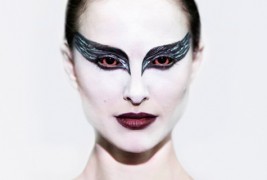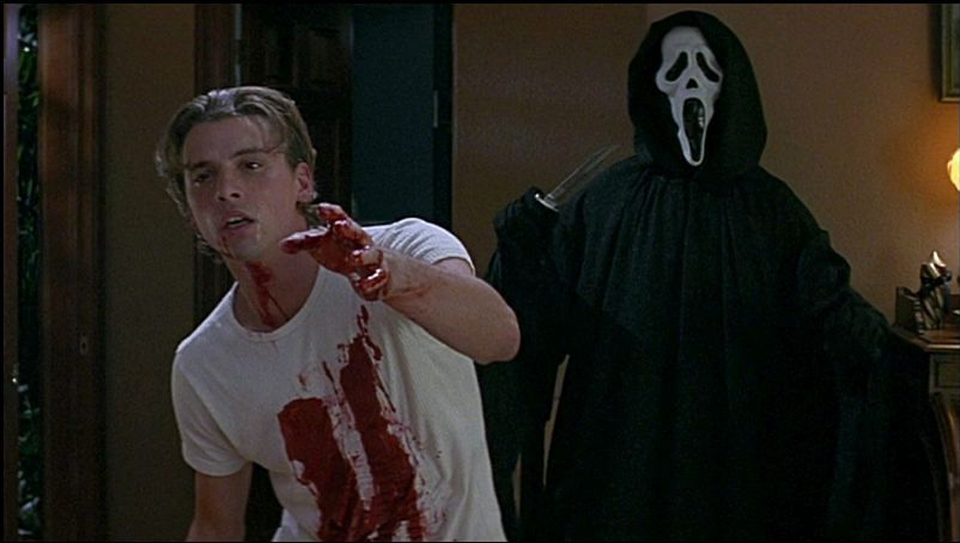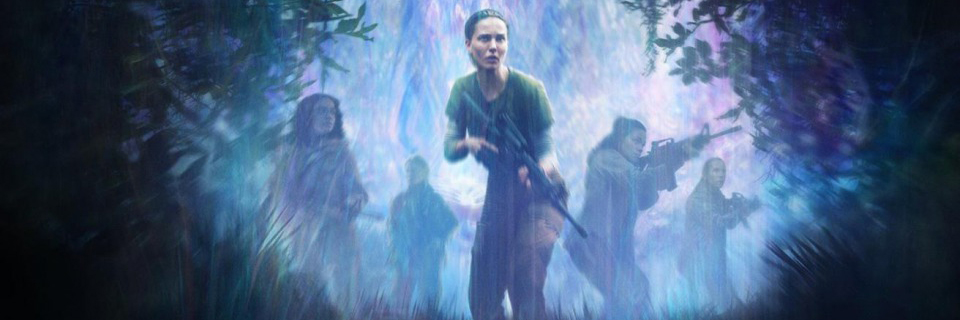
BLACK SWAN is director Darren Aronofsky’s late contribution to the world of cinema in 2010. On the surface this film is revelatory of the excruciating world of professional ballet, replete with arduous competition, mental and physical exhaustion, betrayal, and at the same time the utmost beauty and grace of movement. But in BLACK SWAN the grand-plies and releves are more than just the physical movements of the dancers, forcing the mind to pirouette at the masterful finale.
The superficial similarities to FLASHDANCE and other lighthearted dance films end within minutes and here begins something more akin to Italian maestro Dario Argento’s SUSPIRIA. Labeled as a psychological thriller, this film indeed thrills the psyche.
The film’s protagonist is Nina (Natalie Portman), the charming and innocent girl whose aspiration in life is to become a prima ballerina and who spends every waking moment practicing to become just so perfect. Her company is performing a modern rendition of Swan Lake as envisioned by Thomas (Vincent Cassel), the talented and disquietingly insightful director. With a novel approach to an old classic, the selection of a new prima ballerina is in order.
Along the way a newcomer arrives to the company who is the total antithesis –perhaps benign, perhaps utterly malevolent– to Nina: Lily (Mila Kunis). Lily is as sloppy as Nina is coordinated; as free and effortless as Nina is restrained and technical; as sensual as Nina is frigid. In short, they are each perfect for only one half of the role as the Swan Queen. With this in mind, it becomes Nina’s driving obsession to embrace the personality of the Dark Swan lest she be passed up for the role by Lily. The pursuit of this becomes something that could unravel her abulic personality.
There are also two other characters that play a principal part in the progression of the film: Nina’s overbearing mother (Barbara Hershey), who had aspirations of becoming a prima ballerina herself one day, but gave up on these dreams to raise Nina; and Beth (Winona Ryder), whom Nina has recently replaced as the prima ballerina. Although the moments in which Nina’s mother displays negatively directed attachment are rare, the sense that her love is suffocating is nonetheless pervasive. Between diligently making breakfast for Nina and setting her bedtime, she spends her time making bizarrely distorted paintings and drawings of Nina that hang around her bedroom walls in a shrine to the daughter through whom she’s living vicariously. Beth isn’t present for much of the movie but her ghost haunts Nina as she attempts to come to terms with being selected as the prima ballerina and what the position did to Beth in her time as Thomas’s “Little Princess”.
During the nigh two hours of anguishing en pointe suspense, we come across many of Aronofsky’s signature moviemaking traits. Nina’s selection as the lead in the production sets into motion the most central of Aronofskian themes: Destructive obsession. Each of his former movies portrays the deleterious effects a fixed ideation can bring about. Aronofsky shows us what happens when we don’t think about what we want or whether it will actually make us happy when we get it, only the idea of how to get it; how its pursuit is an autotrophic cycle that destroys us. Haven’t we all been there at some point?
The sweet girl with lofty dreams we see early in the film begins her transformation into a machine of single-minded drive. Without embracing her darker, sensual side she cannot play the Dark Swan. Thomas repeatedly tries to show her that she cannot always be the good little girl she’s been raised to be; that Lily, the new girl, has exactly what Nina lacks with effortless flourish. So Nina becomes obsessed with perfecting the dark half of her persona, something the existence of which she’s always negated.
Suddenly, she is rebelling against everything from her past that had kept her so candy sweet. Her mother, her stuffed animals, her own body all become targets that must be eliminated while she chases after her obsession. The madness becomes absolutely roiling for Nina as she assimilates the fact that Lily could replace her at any moment, in spite of the fact that Lily has been nothing but kind and supportive and acts quite friendly towards her. The thin membrane delineating reality and fantasy is slowly, then suddenly eroded until there are moments of outright horror at the ghastly images that are presented. Perhaps the most stunning element of these hallucinations is the avian transformations that act as thematic vehicles alluding to the acceptance of the darker personality.
Sexuality acts as a fascinating leitmotif throughout the film. It provides a turning point in the relationship between Lily and Nina and it is the key that unlocks Nina’s dark side. In spite of this, the sexuality is very understated and sparse, sublime and barely visible below the surface. Graphic displays of intercourse are often used to cover up a lack of pathos and real emotion with raw gut reactions, but in this film what we have is a sexuality that is teeming like an infected puncture wound rather than being the overt skin infection ravaging the visible tissues. Even though it is something that can sometimes complement the tone of a movie, I often find gratuitous sexuality to be an unnecessary addition to a film that otherwise may not lack anything else. I didn’t find this to be so with the moments of eroticism in BLACK SWAN.
In PI, Aronofsky’s debut feature film, a mathematical genius’s obsession with a number that could perhaps hold the key to patterns in the Stock Market or in fact be the hidden name of God (Perhaps both!) forces him into contact with nefarious groups seeking to acquire this number. The sad decline of the protagonists in 2000’s REQUIEM FOR A DREAM shows how badly the best intentions can manifest. Whether simply trying to lose some weight before appearing on a bizarre television spectacle or buying large quantities of drugs to sell before finally going clean, going straight, the end result is a harrowing debacle that produces a truculent, atavistic response deep in the pith of our moral beings.
Aronofsky’s THE WRESTLER is an equally impressive film that acts as a sibling to BLACK SWAN. In it we find the same basic principle, but from an opposite perspective; it is the Black Swan in Aronofsky’s Swan Lake. Both films depict people most would normally not consider athletes, but who train in ways that are just as brutally merciless and bordering on self-injurious as any of the athletes in the most demanding sports. There is the high world of ballet and the low world of professional (or slightly less professional) wrestling. In either case, the amount of work put into training is disproportionate to the reward from the relatively few who follow each art form. Both Nina and Randy the Ram sacrifice their bodies for a small but devoted group that will exalt them and make them regents of that tiny sphere. What differentiates BLACK SWAN from THE WRESTLER isn’t so much that the sweat, lactic acid, and spandex are in a wrestling ring in one instance and on a stage in the other, but that in the former everyone is young and the only way to go is up, so there is a hunger and a drive that pits those involved in a brawl to get there while in the latter everyone is way past their peaks or simply not appealing enough to enter a more lucrative mainstream world which renders them all as dead fish floating together on the current.
Whereas in THE WRESTLER there is a sense of dignity and cooperation in spite of the lower caste of the athletes, that same sentiment is lacking in the lupine world of BLACK SWAN’S ballet. Randy and his fellow wrestlers easily commune when they are not in the ring beating each other senseless. There is a sense of fraternity and empathy where they all train together and understand each other. In BLACK SWAN, although the ballerinas all train together, “community” is hardly a word that would come to mind in describing the relationships between the embittered girls all looking for the first opportunity to disembowel the new lead for a chance of their own. The competition is certainly intense.
Of all the movies from Aronofsky, I find PI to be the best developed in terms of storyline, character development, and innovation. With REQUIEM FOR A DREAM the same basic principles are there, but it is more about the reaction, the gut-wrenching, mind-rending pace, and lugubrious invitation to degradation that defines the film. It’s a good movie; I just prefer the understated appeal of PI. THE WRESTLER comes in a very close second, tied with BLACK SWAN.
Taking this into account, I’ve come away from BLACK SWAN thoroughly impressed. Aronofsky has really developed his cinematic technique to a point where what was formerly a blunt force instrument is a now a precisely honed scalpel. The subtle descent that begins to unfold until it becomes an agonizing, painfully surreal depiction of madness is uncanny. With fabulous performances all around this film shines with the incandescent glow of its stars. Eerie visual tricks and artistic lighting bring the viewer into the world of Nina’s obsession and her pursuit becomes our own.
4 thoughts on “Black Swan Movie Review”
Comments are closed.















You know, I never thought about how the theme of obsession in one form or another runs through all of Arronofsky’s films, but it’s a very interesting point. I liked “Black Swan” a great deal–it made me think, actually, of some real-life instances of ballet dancers descending into madness–most specifically Vaslav Nijinsky, whose descent into schizophrenia included the belief that he had somehow become more horse-like. Whether this was connected to the harsh training of ballet or not, I don’t know, but the parallel is interesting. Great review!
Thanks for the compliment. The obsession-laden theme running throughout Aronofsky’s work is what makes it so appealing to me. Although Nijinksy’s training could have been connected to his rigorous training, I think that a distinct but equally interesting phenomena occurred in his instance, that is to say, his own burgeoning mental illness –along with that of many other influential people– has made their work within a field so avant garde. It is the mad among the world that create the future because they are unfettered by convention or dogma.
i wrote a review on the movie. Personally, i disliked the movie. I felt it was cliche ridden and to me, to be honest, the descent reminded me of “Secret Window” a bit. I applaud Portman for her dancing, and the camera work was brilliant. But as for the movie, it could have been better.
Indeed, even though the movie seemed cliche-ridden, I still enjoyed it. I felt that those cliches were used effectively and, as I mentioned in my review of Insidious, there isn’t much that hasn’t been overused since time immemorial. It’s a matter of being used well, and I think Aronofsky did just that with this movie. It is of note that Secret Window is itself basically a remake of The Dark Half. Most plots have been taken, really. I will agree that the dancing from Portman was stellar and the camera work was excellent. I also loved the make-up. Thanks for the comment.